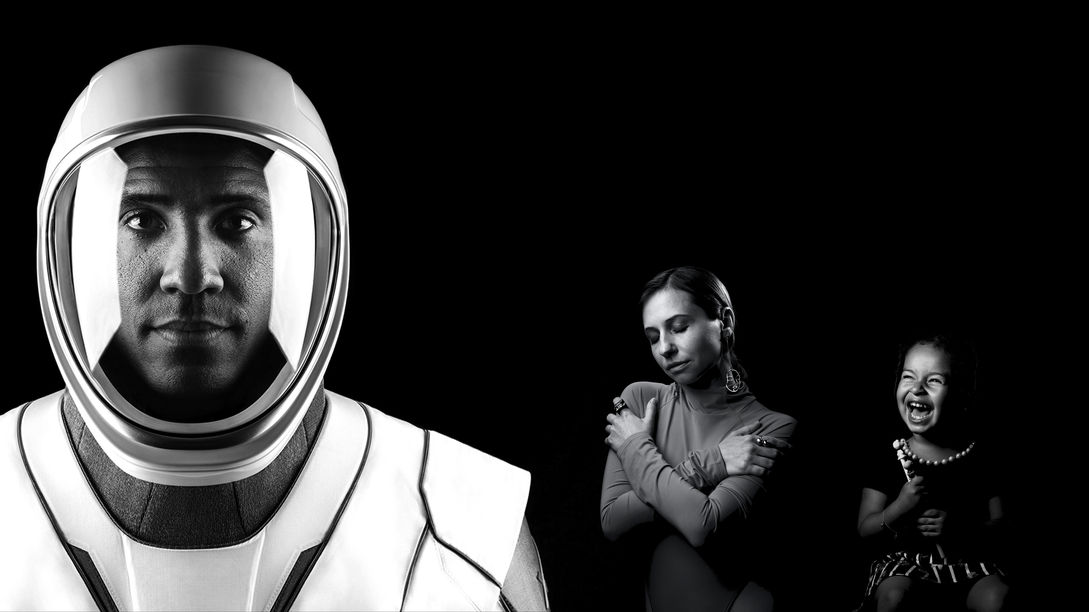I.R.I.S
I.R.I.S stands for Interactive Relation Immersive System and the brief was to create a new kind of communication device. For nearly two centuries, people have communicated over distances. Morse codes, invented in the 1830s, transmitted written information, followed by the transfer of voices. This electronic reproduction of spoken data and emotions fueled industrialization and globalization. In recent times, the World Wide Web's establishment led to the widespread use of video conferences, especially during the pandemic. As we've covered voice and images, the question remains: what sense will be the next focus of communication advancements?
Task
Research, Observation,
Conception, Design, Visualisation
Collaboration
NASA
Year
2021
Duration
8 Weeks

Interact
Through
Touch

Collaboration
In collaboration with NASA in Houston, Texas, and through extensive exchanges with their space engineers, we developed various design briefs and gained insights into current developments, missions, and future space explorations. Early in the process, long-distance communication emerged as a critical challenge for future Mars explorations, given its extended duration. Efficient communication is essential to support astronauts and ensure their well-being while maintaining contact with their loved ones.
500 - 600 Days
Communication will play a paramount role in discussions about space exploration. NASA and private companies, such as SpaceX, are eager to embark on journeys to Mars. This objective entails extraordinary long travel distances and durations. Therefore, it is crucial to establish reliable and diverse communication channels to connect Earth with the astronauts.

Connecting On The Journey
The eagerly anticipated Mars mission, set to launch in 2032, not only represents a remarkable achievement in space exploration but also brings to the forefront the essential role of social communication in the lives of astronauts. Alongside the complex communication links between stations, it's crucial to highlight the significance of maintaining connections with their families during this extended space journey. Specialized channels have been established to facilitate regular and meaningful communication, bridging the vast space gap between Mars and Earth. This emphasis on social communication aims to support the well-being of astronauts, acknowledging the psychological challenges of extended isolation and distance from loved ones.
C-Tactile Nerves
The C-tactile nerve fibers play a crucial role in this process, representing an outcome of human evolution as social beings. These fibers specialize in transmitting slow and gentle touches from the skin to the brain. Operating at a speed of 1-10 cm per second, these nerves are ideally attuned to the pressure associated with a soothing, stroking hand.
Important Factors
and Effects




Oxitocyn Release
Stress Reduction

Successful Mission


Better Group Dynamics
User Journey
The potential for increased physical interaction holds advantages for all stakeholders involved in the Mars mission. This extends beyond impacting the mission's success and the mental well-being of the crew; it also encompasses the well-being of the astronauts' descendants and their extended families. Enhanced physical interaction not only fosters stronger bonds among crew members, promoting teamwork and mission success, but it also has a positive ripple effect on the psychological health and familial relationships of those participating in the mission. Recognizing and prioritizing these aspects can contribute to a more holistic and supportive framework for both the immediate mission and the long-term impact on the astronauts and their families.

Observation
and Prognosis
MAIN
PROCESSOR
FLEXIBLE ARM
FIXATION
CAM
Modularity is Key
The utilization of modules and an associated modular principle provides us with the flexibility to adjust to various environments, innovate with new modules, and maintain the hardware's physical relevance. To consistently implement this approach, the modular principle must deeply integrate throughout the device. Accordingly, internal elements like the processor, memory module, and fan are also externalized and made modular.

SCREEN
SPEAKER
SPEAKER
TACTLE INTERFACE


Ideation
Envisioned for imminent use, the fundamental architecture of the concept closely resembles today's computers but undergoes a revolutionary transformation through the described modularity, heightened flexibility facilitated by ball joints, and the introduction of magnetism. This design innovation allows for effortless expansion, particularly advantageous in weightlessness. Consequently, the entire physical geometry can be analogously replicated, employing a system where the binary code of 1s and 0s is translated into the upward and downward movements of individual pins.


Modularity
in mind to adapt to any situation!

Basic Principle
As previously explained, the unit's entire structure is ingeniously modular. Its elements can be interchanged, expanded, upgraded, and repaired at will, eliminating the need to replace the entire unit. The potential applications are virtually limitless, mirroring its extended lifespan.
From Keyboard to Heartbeat
At the forefront of the communication center is a significant magnetic cylinder, serving as its core. The tactile interface resembles a standard keyboard in everyday working life. Transitioning into the Heartbeat mode, the experience shifts dramatically, allowing users to share intimate moments with their loved ones back on Earth. In this mode, the other person's heartbeat is symbolically represented by a wave-like movement, creating a unique and personal connection in the vastness of space.
Scheme
The underlying principle is succinctly depicted in this simplified diagram. While the dimensions of the installation space set some limitations on this interface, it remains perfectly suitable for manual interaction.
PIN MATRIX

PNEUMATIC PRESSURE
UP
DOWN

PIN SIDEVIEW
Get In Touch With
Your Loved Ones!
This device facilitates astronauts in staying connected with Earth, their families, and friends. While longer distances introduce challenges like latency, preventing real-time phone calls, this innovative device establishes an alternative telecommunication channel. Beyond overcoming the limitations of distance, it stands poised to actively support and enhance human interaction in various scenarios.
“your hand touching mine. this is how galaxies collide.”
- Sanober Khan







































































